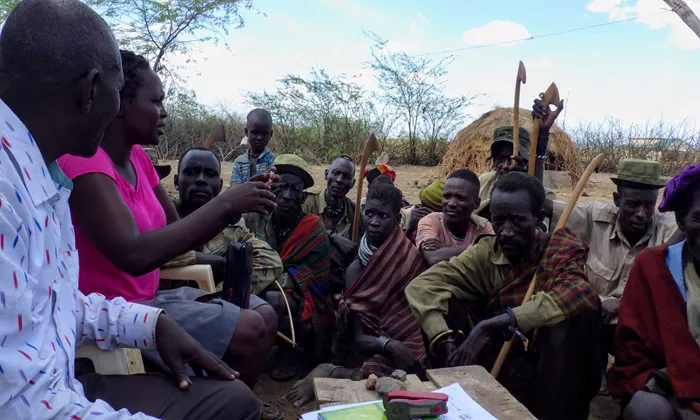A groundbreaking study led by researchers from Arizona State University and the Naval Postgraduate School examines the relationship between hormones, specifically cortisol and testosterone, and post-traumatic stress disorder (PTSD) in a non-industrialized society. The study focuses on the Turkana people, pastoralists in Kenya, and provides fresh insights into PTSD’s physiological underpinnings.
While PTSD is widely studied in industrialized societies, this new research takes a unique approach by examining a community that experiences trauma in the form of combat-related stress from cattle raiding. The study challenges prior Western findings, adding complexity to the understanding of PTSD’s biological impact.
Hormonal Response to Trauma: New Findings
Previous research on PTSD in industrialized populations showed a blunted cortisol response, with cortisol levels failing to rise and fall in the usual pattern throughout the day. These studies were based on individuals exposed to various traumas, such as car accidents and multiple military deployments. However, this new study questioned whether the same hormone patterns would emerge among the Turkana, who experience combat stress in their cattle raids.
Surprisingly, the research revealed that the cortisol levels of Turkana men with PTSD were nearly identical to those without PTSD. However, the study did find that men with PTSD had significantly lower testosterone levels upon waking compared to their trauma-free counterparts.
“The results challenge simplistic narratives about how the human body responds to combat stress,” said Michael Baumgarten, an Army Ranger veteran and graduate student at ASU’s Institute of Human Origins. “We must approach claims about human physiology with caution, especially those that suggest a clear-cut understanding.”
Why the Turkana?
The Turkana people live in a region marked by violent raids with neighboring groups across the South Sudan border. These warriors, or pastoralists, travel long distances, often over 60 miles, to engage in raids that can lead to casualties and loss of livestock. About half of male deaths in this area result from raiding.
Matthew Zefferman, an assistant professor at the Naval Postgraduate School and U.S. Air Force veteran, emphasized the importance of studying this population. The shared cultural background and similar trauma experiences among the Turkana men provide a rare opportunity to compare PTSD cases in a more controlled environment than previous studies involving diverse populations with differing trauma types.
Cultural Factors and Physiological Responses
The study raises questions about how cultural differences may affect the physiological response to trauma. Sarah Mathew, a research scientist at ASU and a long-time collaborator with the Turkana community, pointed out that the results suggest that responses to trauma can differ based on cultural context.
The Turkana’s strong community support for warriors, as well as their cultural traditions and elevated status post-raid, may act as protective factors against PTSD’s physiological effects. Unlike soldiers in industrialized societies, Turkana warriors are deeply integrated into their communities, and their culture honors their role, which could mitigate the negative health impacts of combat stress.
“The results show that studying PTSD in non-industrialized populations like the Turkana provides valuable insights that challenge assumptions about human biology,” said Mathew.
Future Research Directions
Despite the findings, the study leaves unanswered questions, particularly why cortisol levels in Turkana men with PTSD appear “normal” compared to those in industrialized societies. Possible explanations include differences in physical activity levels and cultural norms. The researchers note that further studies are necessary to explore these variables in more depth.
Zefferman also underscored the collaborative nature of the research, thanking the Turkana for their support in the project. “We can only conduct this research with the help of the Turkana community,” he said. “Their willingness to engage with us has been crucial, and we are deeply grateful for their participation.”
This study is a significant step in broadening the scope of PTSD research, offering new perspectives on the condition’s hormonal and cultural dimensions.
Related topic:
Influencers Spread Misleading Health Test Information, Study Finds
Obesity in Children Linked to Increased Skin Conditions
UC San Diego’s Online Fall Prevention Program Shows Health Benefits

